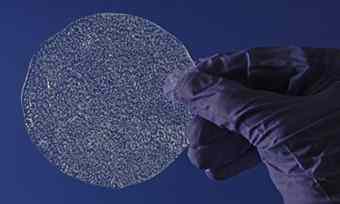They were found deep below Earth's surface, provide vital information about our climate's history and, for the first time, will be publicly displayed in their full freezing glory. Three pieces of ice core, drilled from the Antarctic icecap, one containing bubbles of air from the year 1410, will this week be installed in a glass-fronted freezer cabinet in the Science Museum in London's new Atmosphere gallery.
 Set for its opening by Prince Charles on Friday, the gallery has been designed to outline the basics of climate science and explain why researchers believe human activity is now having a pronounced impact on weather patterns. "This gallery will show how scientists have acquired their knowledge about Earth's climate history – with our ice cores providing some of the most telling examples," says museum director Chris Rapley.
Set for its opening by Prince Charles on Friday, the gallery has been designed to outline the basics of climate science and explain why researchers believe human activity is now having a pronounced impact on weather patterns. "This gallery will show how scientists have acquired their knowledge about Earth's climate history – with our ice cores providing some of the most telling examples," says museum director Chris Rapley.
Air gets trapped by snow as it falls. Then more snow falls on top. Pressure builds up and snow is eventually converted into ice – with air bubbles trapped inside. The deeper you drill, the older the ice – and air bubbles – that you find. "If you drill several kilometres down you find samples that are almost a million years old," says Rapley. "That is why we think of ice cores as treasure troves of climate history."
By drilling down to a particular layer, the oxygen isotopes in a core sample's air bubbles will tell you the global temperature for the time that the air was trapped in snowflakes. This temperature can then be compared with the air's carbon dioxide content. Similarly, salt and dust contamination provides information about sea levels and the spread of deserts across the globe at any given time over the last 800,000 years. Such information has been key to the prediction of future global weather patterns and will form an important background to this week's climate talks in Cancun, Mexico.
"The one critical feature we get from these measurements is that the temperature of Earth's atmosphere and its carbon dioxide content are locked together in a coupled system," adds Rapley. "If one of those variables increases, the other will also rise. Hence the worry about the amounts of carbon dioxide we pump into the atmosphere. If unchecked, these could lead to global temperature rises of up to six degrees Celsius by the end of the century."
The Atmosphere gallery at the Science Museum, London SW7, is open opens to the public from Saturday, 4 December.
Author: Robin McKie | Source: Guardian [November 28, 2010]















